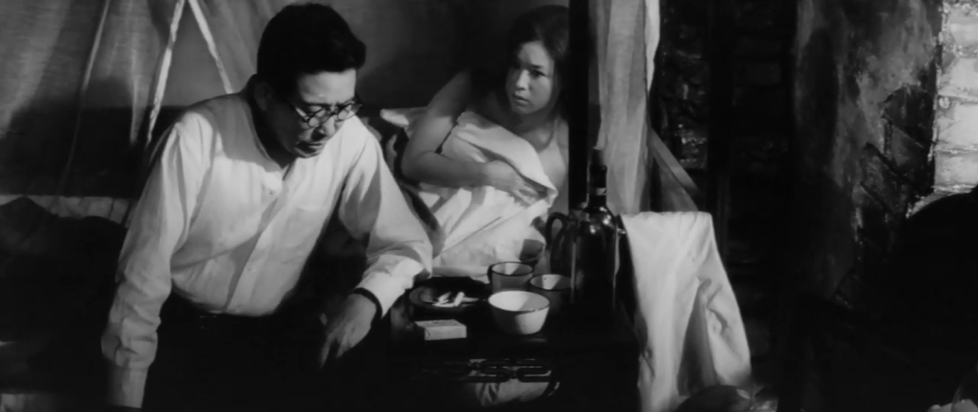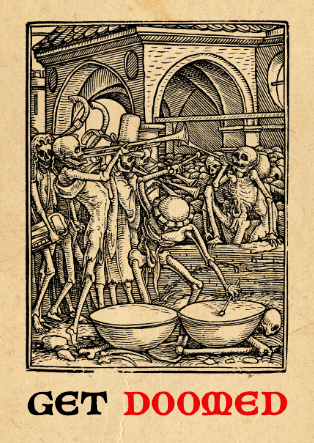
Hell Couldn’t Be Much Worse: The Grim Anti-War Message of Red Angel (1966)
“If people at home saw me, they’d realize how terrible war was and hate it.”
I’ve written a few times recently about the films of Yasuzo Masamura, which I have been introduced to thanks almost entirely to this string of releases of some of his best-known flicks from Arrow Video. Prior to these releases, I had seen only one of his pictures, the one for which he is best known, at least in horror circles: 1969’s Blind Beast.
In the run-up to Arrow releasing that film, however, I also got a chance to see two of Masamura’s other pictures: Giants and Toys from 1958 and Irezumi from 1966 – the same year as the film I’m here to talk about today. And it’s hard to imagine a director having a more impressive year than the one in which they released both Irezumi and Red Angel.
It’s also tough to imagine an actor having a better year than Ayako Wakao – who has been called Masamura’s “muse” – playing the leads in both those films. In Irezumi, she plays what that story’s original author called a “self-aware woman,” who I described in my review as “something at once monstrous and yet self-actualized in a way that makes her monstrousness seem more transcendent than tragic.”
Sakura Nishi, the nurse she plays in Red Angel, could not be more passive in comparison to the “born man-eater” of Irezumi, and yet she is no less self-possessed, in her own way. She needn’t become a monster, because she is already caught in the jaws of one: the Sino-Japanese War.
There have been loads of “war is hell” movies made over the years, but few of them have ever touched the nihilistic brutality of Red Angel – a feat rendered all the more impressive in a film from 1966. The black-and-white camera work is gritty, dark, and claustrophobic without ever losing its beauty or the scope afforded by its widescreen format. The dead and the dying are everywhere, and in an early scene Nishi must hold down a soldier while a doctor amputates his leg.
Is the film gruesome, by modern standards? Perhaps not, but the sheer brutality of it, the grim reality of war, is never far from the frame, whether that’s a barrel full of severed limbs, a soldier holding out his foot and begging them to reattach it, or quieter and less showy moments, such as the reveal that a soldier who has lost both his arms will never get to go home because, “If people at home saw me, they’d realize how terrible war was and hate it.”
Nor is the pain and the perversity of war relegated to those on the front lines. Within minutes of the film’s beginning, Nishi is raped by one of her patients – and not long thereafter, she finds herself in a position to intercede in order to try (and fail) to save his life. Constantly, Nishi and the women around her do the emotional labor for the soldiers who are suffering, while often suffering themselves at their hands.
Yet, after that first assault, Nishi is never really a victim in the same way again. She becomes a survivor, who refuses to let the war grind out her warmth or compassion – though it certainly tries. She eventually falls in love with the surgeon at the frontline hospital, who is impotent as a result of his addiction to morphine and his despair at the “wicked” job that he must do, deciding who lives and who dies, amputating limbs and unable to do much to alleviate the true suffering of those in his care.
Whether succumbing to what seems to be his sexual extortion in order to try to save the life of her rapist or sexually comforting a soldier who has lost both his arms, however, everything Nishi does she does as a way to assert her own agency in a world where everyone around her insists that the only way to survive is to think only of yourself, and only of today. “There is no tomorrow on the battlefield,” the doctor tells her.
“In a world where nothing makes sense and there is little one can do to assure one’s safety or success,” Irene Gonzalez-Lopez writes in the booklet that accompanies the Arrow Blu, “Nishi’s ethical choices may seem bizarre, but they can hardly be said to be more illogical than the overall governing dynamics.”
While Masamura had never served on the front lines of battle, the novelist Yorichika Arima from whose book the film was adapted did, later penning several anti-war novels, of which this was only one (and not even the only one adapted to film by Masamura). Also a veteran of conflict was Red Angel’s director of photography, Setsuo Kobayashi, who recalled that Masumura would “obstinately ask him about the grotesque details of his experience, seeking to depict the cruelty of war in the most realistic and bleak manner possible.”
While none of Masamura’s films that I have thus far seen have shied away at all from tackling the director’s take on social issues, Red Angel is more overtly a “message movie” than any of the others, save maybe Giants and Toys. And while that message – war is a futile, bloody hell – is not remotely novel, it has seldom been hammered home with such grim authority.





